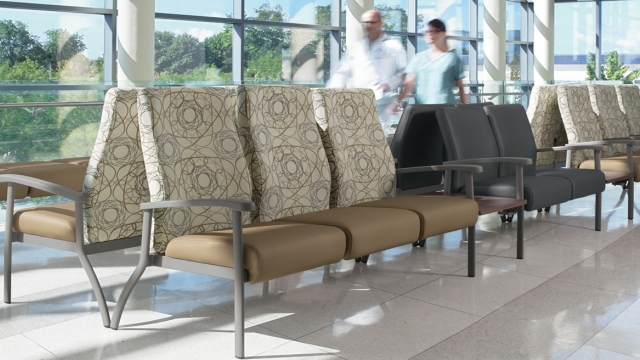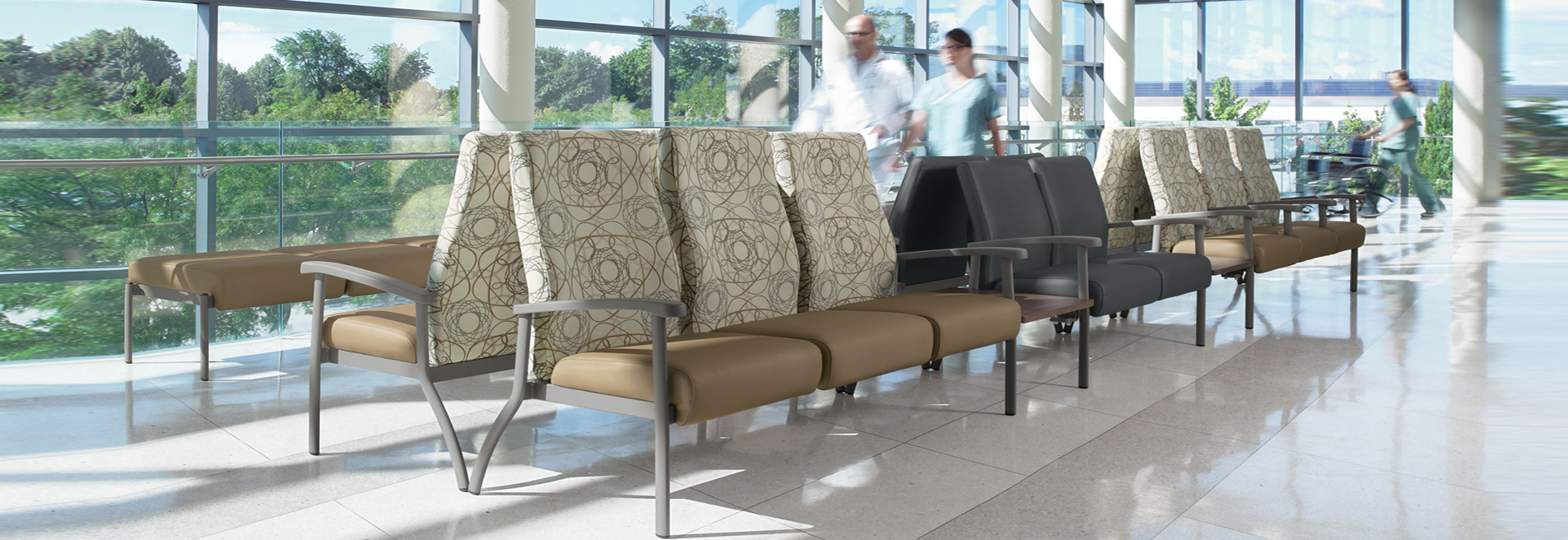
The Essentials: Transforming Healthcare Spaces with Innovative Furniture Designs
In the ever-evolving world of healthcare, the design and functionality of healthcare furniture are playing a pivotal role in transforming healthcare spaces. Gone are the days of sterile and impersonal environments; innovative furniture designs are now enhancing patient comfort, promoting better communication between healthcare providers and patients, and ultimately contributing to improved healthcare outcomes.
Healthcare furniture is being reimagined to address the diverse needs of both patients and healthcare professionals. From patient rooms to waiting areas, designers are prioritizing functionality, comfort, and aesthetics in the creation of furniture pieces that create a soothing and welcoming atmosphere. These innovative designs not only consider the physical well-being of patients but also take into account the emotional and psychological aspects of their healing journey.
Commercial Office Furniture
One of the key focuses in healthcare furniture design is to ensure easy access to essential medical equipment and supplies without compromising on patient comfort. Ergonomic and adjustable furniture options, such as examination tables and chairs, are being incorporated into healthcare facilities, allowing healthcare providers to perform their duties effectively while promoting patient comfort. This blending of functionality and comfort helps create an environment that fosters trust and promotes positive patient experiences.
The concept of patient-centered care has also greatly influenced the design of healthcare furniture. Spaces are being created to encourage open and effective communication between patients, their families, and healthcare providers. Furniture pieces with integrated technology solutions, such as interactive touch screens and connectivity options, enable seamless communication and engagement, facilitating a collaborative approach to healthcare delivery.
Beyond functionality and communication, healthcare furniture design is also embracing sustainability. Manufacturers are exploring eco-friendly materials and manufacturing processes, ensuring that furniture designs not only contribute to improved healthcare experiences but also minimize their environmental impact. From recyclable materials to energy-efficient designs, sustainability is now an integral part of healthcare furniture innovation.
In conclusion, the transformation of healthcare spaces with innovative furniture designs is redefining the very nature of patient care. By prioritizing patient comfort, functionality, communication, and sustainability, healthcare furniture is revolutionizing healthcare environments and contributing to a more positive and inclusive healthcare experience for all.
1. Benefits of Innovative Healthcare Furniture Designs
Innovative healthcare furniture designs offer a range of benefits that enhance the overall healthcare experience for patients, staff, and visitors. By integrating cutting-edge features and functionality, these designs contribute to improved comfort, efficiency, and support within healthcare spaces.
Firstly, innovative healthcare furniture designs prioritize patient comfort and well-being. Ergonomically designed chairs and beds ensure proper support, reducing discomfort and promoting better rest. Additionally, adjustable features allow for customization to individual needs, accommodating patients with varying levels of mobility or medical requirements. By prioritizing comfort, these designs create a soothing and calming environment, which can positively impact patient recovery and overall satisfaction.
Secondly, these designs also focus on enhancing the efficiency of healthcare spaces. Furniture with built-in storage solutions helps optimize valuable space, facilitating a clutter-free environment and improved organization. This streamlines workflows for healthcare professionals, allowing them to access necessary equipment and supplies conveniently. Furthermore, functional designs that can be easily cleaned and maintained contribute to a hygienic environment, reducing the risk of infections and improving overall safety.
Lastly, innovative healthcare furniture designs also aim to create a welcoming and inclusive atmosphere for patients, staff, and visitors. Collaborative seating arrangements and social spaces are incorporated to promote interaction and a sense of community within healthcare settings. This encourages patients to engage in social activities, fostering emotional support and reducing feelings of isolation. Additionally, aesthetically pleasing designs can help alleviate stress and anxiety, contributing to a positive healing environment.
In conclusion, innovative healthcare furniture designs offer a range of benefits in terms of patient comfort, efficiency, and a welcoming atmosphere. By incorporating these designs into healthcare spaces, healthcare providers can create environments that promote better healing, improve workflows, and enhance the overall experience for all stakeholders involved.
2. Key Considerations for Healthcare Furniture Selection
When selecting furniture for healthcare spaces, there are several important factors to consider. By carefully considering these key elements, healthcare facilities can ensure they choose the most suitable furniture to enhance patient comfort, improve staff efficiency, and create an atmosphere conducive to healing.
Firstly, Ergonomics: Healthcare furniture should prioritize ergonomics to support the wellbeing of both patients and healthcare professionals. Ergonomically designed furniture ensures proper body support, reduces the risk of musculoskeletal disorders, and promotes comfort during long periods of use. Consideration should be given to adjustable features, such as height-adjustable chairs and desks, to promote optimal positioning for different users.
Secondly, Durability: Healthcare environments are subjected to high levels of use and often require stringent cleaning protocols. Therefore, furniture selected for healthcare spaces must be durable and easy to clean. Materials such as antimicrobial vinyl, which can withstand regular disinfection, can help maintain a hygienic environment. Robust construction, reinforced joints, and stain-resistant surfaces are also important considerations to ensure furniture longevity.
Lastly, Flexibility: Healthcare spaces need to accommodate a variety of activities and users. Versatile furniture that can be easily reconfigured to suit changing needs is crucial. Modular seating and adjustable tables are examples of flexible furniture that can adapt to different spatial requirements. Furthermore, furniture with built-in storage solutions can optimize available space, making it more efficient for both patients and staff.
By considering the ergonomic qualities, durability, and flexibility of healthcare furniture, facilities can create spaces that enhance patient comfort and promote staff well-being. These factors are essential in transforming healthcare spaces into environments that support healing and recovery.
3. Examples of Transformative Healthcare Furniture Solutions
Ergonomic Patient Beds: One example of transformative healthcare furniture is the development of ergonomic patient beds. These beds are designed with patient comfort and mobility in mind. They often come with adjustable features such as height, headrest, and leg rest positions, allowing patients to find their optimal position for rest or recovery. Additionally, these beds may have built-in alarms and monitoring systems to ensure patient safety and provide efficient care.
Modular Waiting Room Seating: Another innovative solution for healthcare spaces is the use of modular waiting room seating. Traditional waiting areas can often be crowded and uncomfortable, leading to additional stress for patients and their families. Modular seating systems provide flexibility, allowing healthcare providers to create seating arrangements that can accommodate different group sizes or be easily rearranged as needed. Furthermore, modular seating can be designed with durable and easy-to-clean materials, promoting hygiene and infection control in healthcare environments.
Portable Examination Tables: Portable examination tables are a game-changer in enhancing healthcare accessibility and efficiency. These tables can be easily moved from one location to another, allowing healthcare professionals to conduct examinations or procedures in various settings outside the traditional clinical spaces. With their lightweight and foldable designs, portable examination tables enable healthcare providers to deliver care in remote areas, disaster zones, or even during home visits. This type of furniture contributes to improving healthcare access and reducing barriers to medical services.
By incorporating these transformative healthcare furniture solutions, healthcare facilities can create a more patient-centered and functional environment. These examples represent just a glimpse of the innovative furniture designs available in the healthcare field, showing the tremendous potential for improving the overall experience and outcomes for patients and healthcare providers alike.




